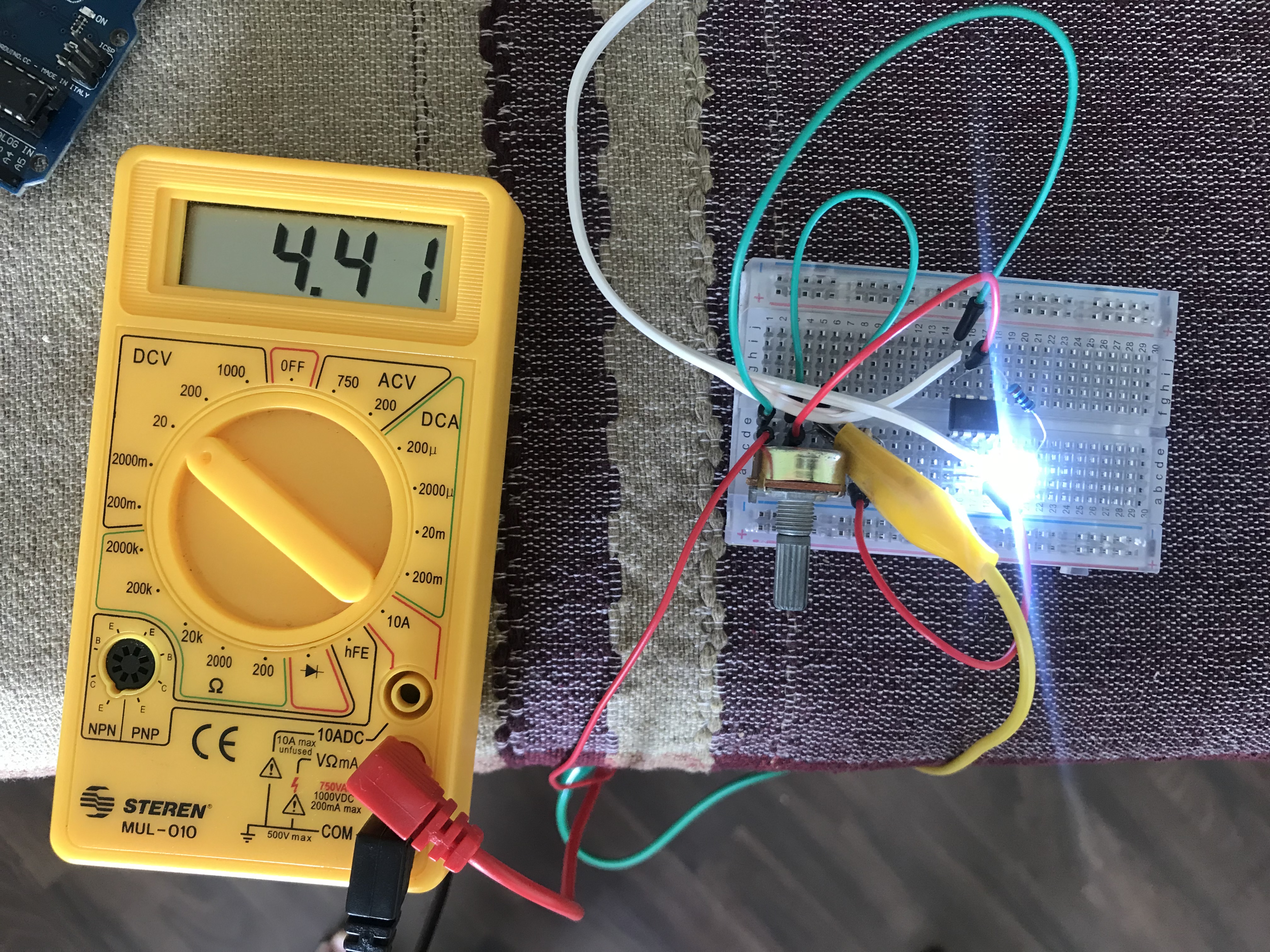5. E-Textiles and Wearables I#
This week I worked on an E-textile soft sensor
Pressure sensor#
Materials:
Conductive fabric Non conductive fabric LED 9V batterie
Assembling#






Result#
Analogue Sensor. LED#


Analogue Sensor. Graphite sensor#


Changes in capacitance can be seen as followed



Code#
// Pin for the LED
int LEDPin = 13;
// Pin to connect to your drawing
int capSensePin = 2;
// This is how high the sensor needs to read in order
// to trigger a touch. You'll find this number
// by trial and error, or you could take readings at
// the start of the program to dynamically calculate this.
int touchedCutoff = 60;
void setup(){
Serial.begin(9600);
// Set up the LED
pinMode(LEDPin, OUTPUT);
digitalWrite(LEDPin, LOW);
}
void loop(){
// If the capacitive sensor reads above a certain threshold,
// turn on the LED
if (readCapacitivePin(capSensePin) > touchedCutoff) {
digitalWrite(LEDPin, HIGH);
}
else {
digitalWrite(LEDPin, LOW);
}
// Every 500 ms, print the value of the capacitive sensor
if ( (millis() % 500) == 0){
Serial.print("Capacitive Sensor on Pin 2 reads: ");
Serial.println(readCapacitivePin(capSensePin));
}
}
// readCapacitivePin
// Input: Arduino pin number
// Output: A number, from 0 to 17 expressing
// how much capacitance is on the pin
// When you touch the pin, or whatever you have
// attached to it, the number will get higher
// In order for this to work now,
// The pin should have a 1+Megaohm resistor pulling
// it up to +5v.
uint8_t readCapacitivePin(int pinToMeasure){
// This is how you declare a variable which
// will hold the PORT, PIN, and DDR registers
// on an AVR
volatile uint8_t* port;
volatile uint8_t* ddr;
volatile uint8_t* pin;
// Here we translate the input pin number from
// Arduino pin number to the AVR PORT, PIN, DDR,
// and which bit of those registers we care about.
byte bitmask;
if ((pinToMeasure >= 0) && (pinToMeasure <= 7)){
port = &PORTD;
ddr = &DDRD;
bitmask = 1 << pinToMeasure;
pin = &PIND;
}
if ((pinToMeasure > 7) && (pinToMeasure <= 13)){
port = &PORTB;
ddr = &DDRB;
bitmask = 1 << (pinToMeasure - 8);
pin = &PINB;
}
if ((pinToMeasure > 13) && (pinToMeasure <= 19)){
port = &PORTC;
ddr = &DDRC;
bitmask = 1 << (pinToMeasure - 13);
pin = &PINC;
}
// Discharge the pin first by setting it low and output
*port &= ~(bitmask);
*ddr |= bitmask;
delay(1);
// Make the pin an input WITHOUT the internal pull-up on
*ddr &= ~(bitmask);
// Now see how long the pin to get pulled up
int cycles = 16000;
for(int i = 0; i < cycles; i++){
if (*pin & bitmask){
cycles = i;
break;
}
}
// Discharge the pin again by setting it low and output
// It's important to leave the pins low if you want to
// be able to touch more than 1 sensor at a time - if
// the sensor is left pulled high, when you touch
// two sensors, your body will transfer the charge between
// sensors.
*port &= ~(bitmask);
*ddr |= bitmask;
return cycles;
}
Analogue Sensor. Temperature sensor#



Code Example#
{
float tC;
void setup() {
Serial.begin(9600);
}
void loop()
tC = analogRead(A0);
tC = (5.0 * tC * 100 )/1024.0;
Serial.print(tC, 1);
Serial.print(" °C");
Serial.println();
delay(1000);
}
}






